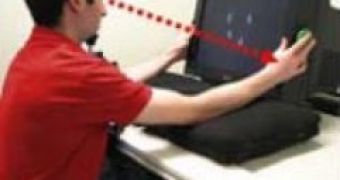If you want to inspect an object thoroughly, hold it in your hands - that should keep you occupied for a while. Psychologists at the Washington University who have recently showed that an object within the grasp of our hands is much closer investigated than an object in the distance, affecting our perception and the speed of reaction. The discovery brings new insight on how our brain functions and could help in the future rehabilitation of disabled people or individuals recovering from traumatic events that left certain limbs of their bodies paralyzed.
"Being able to have both hands on the wheel might enhance a driver's perception of the wheel and the nearby instruments. If the car is perceived to be a type of extension of the wheel, then having both hands on the wheel might enhance the driver's perception of the car's location and of objects near to the car. So it is quite possible that there could be an unexpected benefit of having both hands on the wheel," says Ph.D. Richard A. Abrams, professor of psychology in Arts & Sciences at the Washington University and lead author of the study.
In an experiment destined to test the reaction speed of a person during an activity, professor Abrams placed a number of participants, one at a time, in front of a monitor and instructed them to push two buttons as soon as they saw the letters S or H displayed in a group of other letters. The results of the experiment showed that the participants who had the two buttons located on either side of the monitor had significantly slower reactions than the participants who had the buttons placed on their laps, suggesting they were slower at shifting their attention.
Abrams however, believes that we are significantly slower in shifting our attention from one item to another when our hands are in our field of view, as we are most likely to closer investigate an object with our hands to establish in which way it can be manipulated or if it presents any harm to us.
"This is the first experiment to investigate the effect of hand position on response time for a visual search task. In all previous visual search experiments, subjects viewed stimuli on a display and responded by pressing buttons on a table, where their hands were far from the stimuli. In our experiment, the subjects responded using buttons attached to the display so that their hands were next to the stimuli," Abrams added.
According to Abrams, the same effect can be observed on robotic arms equipped with cameras at the end, as the operator needs to see the surroundings of the arm in order to manipulate it accordingly: "The engineers who designed the arm knew that positioning it would be easier if they had the camera right in hand. What we didn't know until now was that humans have a mechanism for doing this, too."

 14 DAY TRIAL //
14 DAY TRIAL //